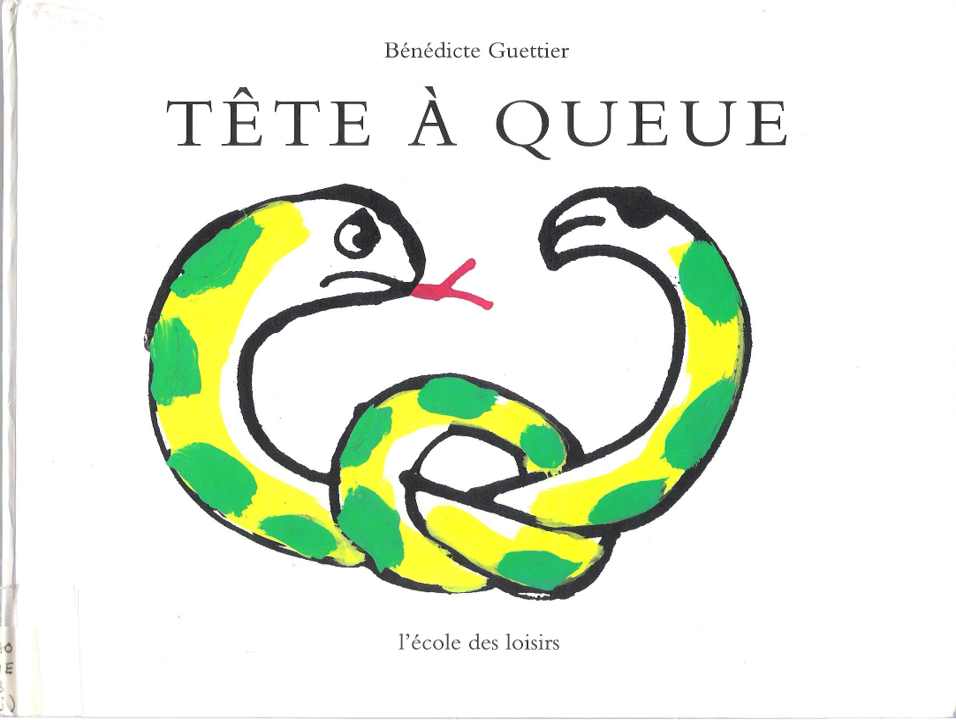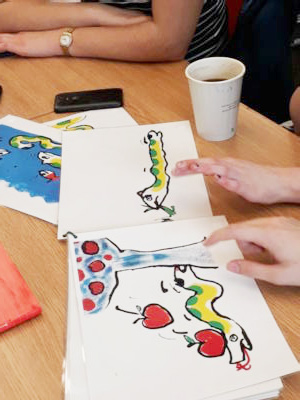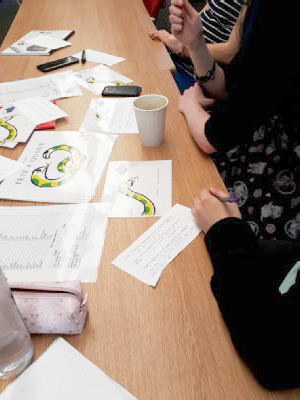Academics from the School of Modern Languages and Cultures (SMLC) and the Centre for Teacher Education (CTE) applied for IATL Pedagogical Intervention funding to invite Dr Stacie Allan to run a series of workshops on translation with students, staff and local Modern Foreign Language teachers. Stacie is an academic working in the field of French Studies, who is also a professional translator. She has been involved with the national Translators in Schools programme which sends professional translators to facilitate workshops in schools and at other outreach events with young people. The programme encourages pupils to think about the processes involved in moving between languages and cultures, and to understand the translation process as a creative, rather than a mechanical, one. Stacie has experience in running workshops using poetry (with refugee children in London) and picture books (with year 6 children).
The moment seemed ripe to invite Stacie to speak, for a number of reasons. The SMLC and the CTE began their first joint Modern Foreign Language Teaching UG module as part of the Warwick In Schools programme in this current academic year. Furthermore, a new Translation Studies academic pathway has also been developed across the SMLC and is now embedded from the first year as a SMLC research and teaching specialism. Finally, Modern Foreign Language teachers (working in a discipline which is in serious decline within the State sector) have been grappling with the new GCSE and A level syllabi, both of which feature the skill of translation more heavily than the previous specifications. Running a series of workshops that explored ways of enthusing pupils and students about the art of translation for a mixed audience of undergraduate SMLC students, PGCE students, local teachers and Warwick teaching staff seemed just the thing!
The Teacher and Student Workshops
We had around 20 takers for the teacher workshop: a mixture of local teachers and PGCE students, including 2 Warwick alumni, one of whom had ventured down from Sheffield! A similar session was run for undergraduates from the SMLC.

Stacie focused her Making Head or Tail of French workshop on puns and idioms abundantly present in this children’s picture book. The Head and Tail characters encounter a new dispute or struggle on every page, each structured around punning on the words ‘tête’ and ‘queue’. Using this obvious challenge to the translator as a starting point, Stacie showed her audience the stages that she would take school pupils through as they attempted to move this story from a French-speaking readership to an English-speaking one.
- Stage 1: how useful was the picture – could it help in decoding the text? Did it give a clue as to the meaning of the text? Did it inspire translations?

- Stage 2: what did the individual words on the page mean (Stacie supplied a glossary and we imagined what pupils would discover as they looked these up)? What is going on when the meanings of individual words don’t add up to the meanings of the whole?

- Stage 3: We put ourselves in the place of young learners discovering what idioms are by moving from looking up individual words in the text, to looking at the idioms glossary that Stacie had provided. There we discovered that ‘Tête à Queue’ means, literally ‘Head to Tail’, and, idiomatically ‘U turn’. As learners, we were brought face to face with the need to make an imaginative leap in order to make meaning from individual words that did not make literal sense when combined. One teacher remarked that she envisaged her class getting quite angry at this:
What! You take the trouble to look up words and your sentence still doesn’t make sense!!
- Finally, Stacie challenged us to translate the idioms we’d decoded from the French source text into English puns, and to think about how these would fit with the book’s illustrations. This turned out to be a very testing exercise, as the equivalent English idioms frequently used vocabulary that didn’t match the images. This generated animated discussion: if we were translating this book professionally, would we
o Commission different illustrations?
o Change the order of the illustrations?
o Give the book a different title (something based on ‘head over heels’, for instance?)
o Abandon making the puns fit with the image and focus on the story?
Drawing things together
It was strongly felt that this kind of activity was very malleable and could work well at all levels of the language-learning process. Some teachers raised questions about how primary school children had coped in Stacie’s previous workshops. Stacie explained that there the work done with pupils had been avowedly cross-curricular: pupils had been encouraged to draw on their experiences in English and art, as well as their French classes, and the emphasis had been on discovering the fun of puns. We realized that this kind of exercise might be more difficult to run in the secondary classroom, where the focus is more narrowly on Modern Foreign Language learning. However, a number of ideas bubbled to the surface:
- Using the activity as part of an enrichment day where secondary pupils go off timetable and undertake cross-disciplinary activities
- Using a single image as an ice-breaker at the start of a class
- Using the activity with A level or first-year university student , generating a task-based activity in which students are required to imagine translating a foreign-language picture book for a publishing house
- Using the activity as part of a School of Languages outreach / widening participation activity
The Research Seminar
In Stacie’s third session, attended by academics and PGCE students, she took us through the processes that had led her to become involved in the Translators in Schools programme. She explained how she had planned, structured and delivered her poetry translation workshops Translation in the City (with bilingual first-language French 14 – 15 years) and Exile and Creativity (with 13 – 14 year old refugees). This was an opportunity to think about translation strategies and the application of translation theory in greater depth, and generated a very interesting discussion about the tensions between ‘mechanical’ translation (based on the replication of certain equivalent structures in the target language), and ‘creative’ translation informed by an affective response to the original poems (focusing on their sensory impact). Our discussion centred around:
- Frustrations experienced by trainee teachers at having to teach translation at GCSE level as a mechanical exercise based on translation at word and short phrase level rather than as a response to a text as a whole.
- The perception of a missed opportunity within the key stage 4 and 5 syllabi, which do not permit the study of creative translation, with its emphasis on cross-cultural exchange. Many of those present felt that wrestling with translation as an open-ended, culturally-informed enterprise would emphasize the purpose of language learning for native English speakers, countering the ‘English is enough’ response with the opportunity to look at culture, space and emotion through the eyes of another language speaker.
In all
Translation as a cross-cultural, creative enterprise is a popular and fast-developing discipline within modern foreign languages at HE level. The series of workshops presented by Stacie allowed school teachers and trainee teachers to see how a functional linguistic exercise can grow into something more dynamic and personally-engaging when undertaken at an advanced level, and also to discover how they might introduce this dimension of translation into the school classroom by shaping it around a series of small steps. MFL teachers and academics share a common mission to switch pupils on to language learning – without gain in this area, we will continue to recruit low numbers of linguists into HE nationally. Having a set of usable, practical activities up our sleeve to engage pupils will be one way to join the dots between the practice of languages at school, university and professional levels.

